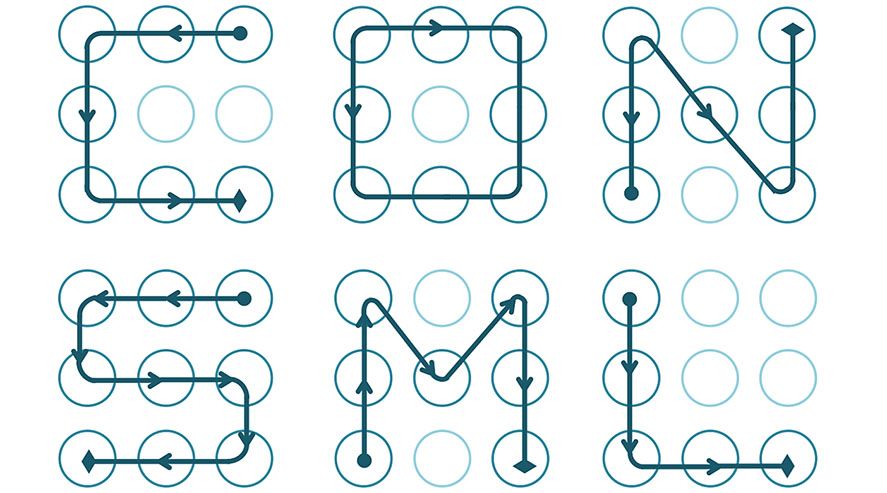Our tongues are tired from explaining so often the things to take into account to keep the passwords you use on the Internet safe. And just like you should choose an unpredictable character combination for your normal passwords, you should do the same thing with other security systems like the unlock pattern Google has introduced for its Android operating system. This is borne out by an interesting study done by researchers at the Norwegian University of Science and Technology analyzing more than 4,000 such patterns and finding they could be quite easy to break. The results are quite revelatory.
From the total sample, some 10% used an unlock pattern similar to a letter of the alphabet, usually related to the person’s own name or that of a loved one, meaning a potential hacker wouldn’t have too hard of a job predicting the pattern.

As with text passwords, you can decide the level of depth and complexity in the pattern used. The minimum number of nodes in the pattern should be 4 points, which corresponds to 1,624 combinations. In turn, with eight nodes that figure rises to 140,702. Likewise, the shape of the pattern itself displays certain generalized features, such as the fact that 77% of them start at one of the four corners of the matrix.
All these habits directly affect the difficulty of any potentially malicious user who tries to break the protection, especially considering that this pattern system is becoming increasingly common on touchscreen devices and relegating traditional text passwords to a back burner. These predictive methods are used by hackers to get algorithms by brute force via Markov chains and analog models, a statistical structure where the probabilistic result varies depending on the previous values. Exactly what happens with the patterns mentioned above.

Just as you finally quit using the classic ‘12345’ as your email password a while ago, it’s now time to swap those touchscreen drawings for something a bit more elaborate.





